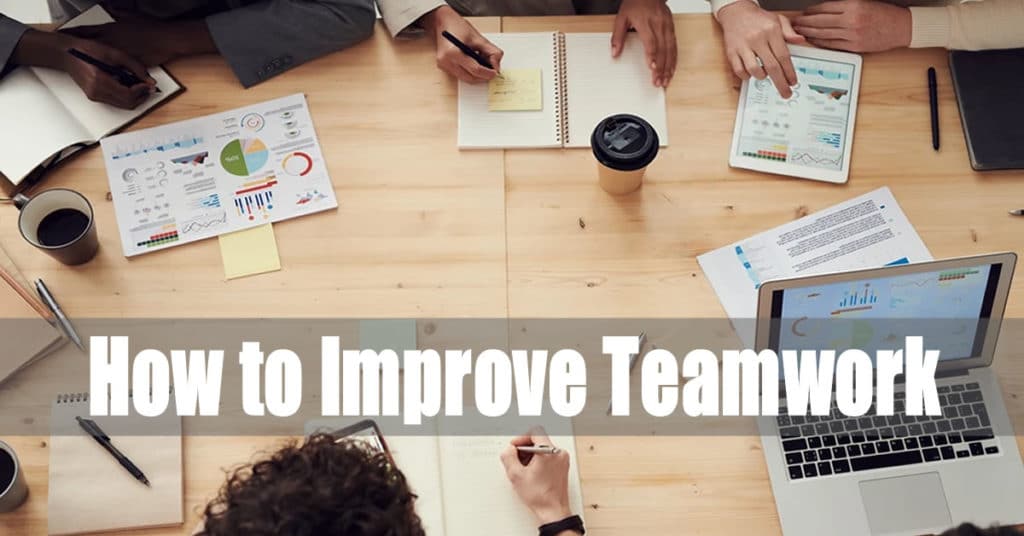People have been fascinated by the DiSC theory’s foundations and teachings for many years, with some of the most profound research dating back as far as 444. B.C. So, what are the 4 DiSC personality types?
The DiSC Assessment groups personality styles into four main quadrants: (D) Dominance; (i) Influence; (S) Steadiness; and (C) Conscientiousness. The name of the model stands for these personality styles. However, there are 12 styles; D, Di, iD, i, iS, Si, S, SC, CS, C, CD, and DC.
DISC theory has helped many people gain self-awareness and build better relationships by understanding themselves and those around them. Yet, this only comes with understanding each individual’s unique personality. Join us as we discuss the various personality styles and style combinations within the DiSC Personality Model. Recent case studies DISC personality styles show there is still a lot to know about the styles and relationships.
The 4 DiSC Personality Types
Although the four founding quadrants are used as a base for the modern DISC personality types, DiSC is still incredibly comprehensive. The DISC assessment categories do not seek to fit individuals into one of these four quadrants but attempt to understand and interpret all potential mixtures within each individual. People are made up of all four styles.
The DiSC model at its’ core can be viewed as a two-dimensional model (Figure 1). The vertical axis is described as a behavioral activation system (fast-paced or moderate-paced). Behavior that is seen as influencing or assertive is activated on this axis. The bottom of the horizontal axis is described as a behavioral inhibition system. In other words, this is avoidant behavior that is activated in response to a perceived threat.

Figure 1: Two Dimensions of DISC
A person who would score on the behavioral inhibition system would be seen as demonstrating a lower level of energy, hence the term moderate-paced is used. These people would be described as more careful to their environment.
The horizontal axis (skeptical or accepting). Individuals who fall on the “skeptical” side tend to be more questioning and more challenging of others. People who fall on the “accepting” side of the axis tend to be more trusting and open to other people. People who fall on the accepting side will place a higher value on harmony, cooperation, and agreeableness, whereas, people on the skeptical side show less concern for these traits.
Dominance
DC
Those with this combination are perfectionists, diligent, determined, creative, blunt, critical, cool, focused, and tough-minded. They take the initiative to achieve independence and personal accomplishments and fear failure.
Within leadership roles, they are resolute, speak up about problems, and improve methods or procedures. They influence others with their high standards and determination and stick up for their rights in conflict situations.
| Goals | Wants independence, and personal accomplishment |
| Overuses | Bluntness, sarcasm or being condescending |
| Fears | Failure to achieve their standards |
| Can increase effectiveness by | Show more warmth, have tactful communication with others |
D
People with a “D” Style tend to be direct, result-oriented, firm, strong-willed, and to the point. They can display more aggressive behavior towards others and will push hard for their views and opinions. This style may show less concern for others and come across as blunt and direct. Due to their fast-paced nature, they demonstrate a high drive for results and may lack patience with some people who seem slower in pace or thought. They might view themselves as tough-minded and competitive in nature.
| Goals | Bottom-line results, winning |
| Overuses | The need to win, which results in win/lose scenarios |
| Fears | Failure, appearing weak, or being taken advantage of |
| Can increase effectiveness by | Have more patience, practice empathy |
Di
These people are dynamic, curious, persuasive, and results oriented. These individuals can be viewed as bold, adventurous, and enterprising. A combination of confidence and poise lets others’ see them as inspiring or magnetic. Animated and inspiring, this style seeks to influence others easily.
They influence those around them with charm and bold action. They address issues head-on in conflict situations, but they may say things they will regret.
| Goals | Take quick action; find new opportunities |
| Overuses | Impatience, egotism, and manipulation |
| Fears | Loss of power |
| Can increase effectiveness by | Have more patience, show humility, have more consideration for others’ ideas |
Influence
iD
Those with this style combination are poised, persuasive, influential, impatient, adventurous, open, high-energy, ambitious, self-promoting, and charismatic. They fear fixed environments and loss of attention, and strive to achieve popularity, exciting breakthroughs, and prestige.
When in leadership roles, they seek to push boundaries, find opportunities, and inspire action, and they influence others with their boldness and passion. They may become emotional or dramatic in conflict situations, and can be perceived as pushy, intimidating, or insincere.
| Goals | Take quick action; find new opportunities |
| Overuses | Impatience, egotism, and manipulation |
| Fears | Loss of power |
| Can increase effectiveness by | Have more patience, show humility, have more consideration for others’ ideas |
i
This style would be described as high-energy, optimistic, lively, and enthusiastic. Compared to the average person, they seek out new social opportunities and are more talkative in nature.
| Goals | Popularity, approval, and excitement |
| Overuses | Optimism, praise |
| Fears | Rejection, not being heard |
| Can increase effectiveness by | Being more objective, following through on tasks |
iS
These people are collaborative, empathetic, upbeat, deadline-challenged, conflict-averse, warm, friendly, accepting, cheerful, sociable. They usually fear putting pressure on others or being disliked, and value friendship.
When in leadership roles, they are supportive, respectful, and positive, and they influence others with agreeableness and empathy. But, these people can also be indirect and conflict-averse. They usually seek emotional support in conflict situations and may dwell on damaged relationships.
| Goals | Friendship |
| Overuses | Too much patience with others; indirect approaches |
| Fears | Pressuring others, not being a part of the team or being disliked |
| Can increase effectiveness by | Acknowledge others’ flaws, confront issues more directly |
Steadiness
Si
People with this combination are described as well-liked, team-spirited, positive, conflict-averse, over-extended, approachable, collaborative, encouraging, generous, and compassionate. They fear facing aggression or being forced to pressure others, and strive to be accepted and develop close relationships.
They are laid back, patient, and supportive in leadership roles and influence others by showing empathy and being patient. But, they may struggle to address issues and others’ flaws, as they often show empathy or gloss over problems in conflict. They will benefit from saying “no” when necessary and confronting the issues at hand.
| Goals | Acceptance, close relationships |
| Overuses | Kindness, personal connections |
| Fears | Being forced to pressure others, facing aggression |
| Can increase effectiveness by | Saying “no” when necessary, addressing issues |
S
| Goals | Harmony, stability |
| Overuses | Modesty, passive resistance, compromise |
| Fears | Letting people down, rapid change |
| Can increase effectiveness by | Displaying self-confidence, revealing true feelings |
SC
These people are consistent, predictable, accommodating, reliable, thoughtful, soft-spoken, stable, patient, inflexible, and self-controlled. They strive to create calm environments, fixed objectives, and steady progress and often fear time pressure, uncertainty, and chaos.
They are fair-minded, steady, modest, and consistent in leadership roles and influence others through self-control, diplomacy, consistency. But, they may be overly cautious and afraid to push boundaries. They encourage calm demeanors or retreat when faced with conflict. They will benefit from initiating change and speaking up.
| Goals | Calm environment, fixed objectives, steady progress |
| Overuses | Willingness to let others lead |
| Fears | Time pressure, uncertainty, chaos |
| Can increase effectiveness by | Initiating change, speaking up |
Conscientiousness
CS
People with this combination are reflective, stable, orderly, even-tempered, cautious, precise, well-prepared, patient, conventional, and self-controlled. They fear emotionally charged situations or ambiguity and aim to achieve stability and reliable outcomes.
They are fair-minded, reliable, steady, modest, and consistent in leadership roles, but may be afraid to challenge the norms. These people encourage calmness and avoid emotional situations in conflict. They prefer to work behind the scenes, or let others’ take the lead, and dislike “rework.”
| Goals | Stability, reliable outcomes |
| Overuses | Traditional methods, sense of cautiousness |
| Fears | Emotionally charged situations, ambiguity |
| Can increase effectiveness by | Show flexibility, be more decisive, show urgency |
C
Those who fall within this DISC personality type emphasize working conscientiously within existing circumstances to ensure accuracy and quality. These analysts are motivated by opportunities to display expertise, expand knowledge, and produce quality work.
They overpower others with facts in conflict situations, but they may overuse restraint and analysis. They strive to be accurate and correct, attain knowledge and expertise, demonstrate stability and reliability, stick to objective processes, and continue personal growth. The C Style tends to be the most private and reserved of all the styles.
| Goals | Accuracy, objective processes |
| Overuses | Analysis, restraint |
| Fears | Being wrong, strong displays of emotion |
| Can increase effectiveness by | Look beyond the data, acknowledge others’ feelings |
CD
These people are objective, disciplined, systematic, skeptical, determined, questioning, stubborn, and cynical. They value efficient results and rational decisions, as they fear failure and lack of control.
They are independent leaders who will question and challenge the norms for better results. These people stick up for their rights and may become passive-aggressive in conflict. They would benefit from showing more cooperation and taking note of others’ needs.
| Goals | Efficient results, rational decisions |
| Overuses | Bluntness, critical approach |
| Fears | Lack of control, failure |
| Can increase effectiveness by | Cooperation & collaboration, pay attention to others’ needs |
CONCLUSION
All humans have a blend of the four quadrants (DISC Profile Types), and there are various possibilities for personality styles and style combinations. Everyone has three priorities related to their DiSC Style; some people may have four or five priorities, which just shows the uniqueness of personality.
Regardless of a person’s DISC style, all styles are equally valuable, all have blind spots and strengths and finally we are a blend of all four styles. If you would like to know more about DISC assessments or take a DISC personality test, please give us a call.




